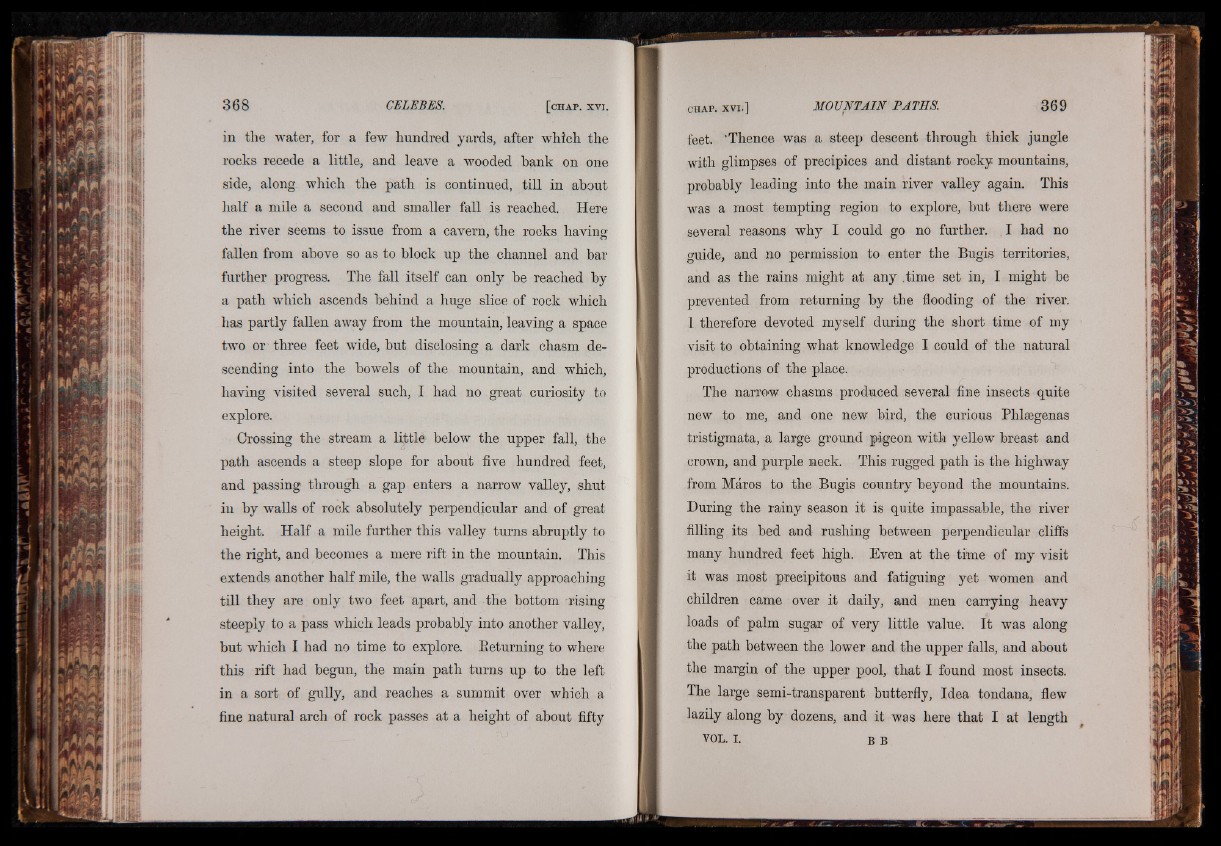
in the water, for a few hundred yards, after which the
rocks recede a little, and leave a wooded hank on one
side, along which the path is continued, till in about
half a mile a second and smaller fall is reached. Here
the river seems to issue from a cavern, the rocks having
fallen from above so as to block up the channel and bar
further progress. The fall itself can only be reached by
a path which ascends behind a huge slice of rock which
has partly fallen away from the mountain, leaving a space
two or three feet wide, but disclosing a dark chasm descending
into the bowels of the mountain, and which,
having visited several such, I had no great curiosity to
explore.
Crossing the stream a little below the upper fall, the
path ascends a steep slope for about five hundred feet,
and passing through a gap enters a narrow valley, shut
in by walls of rock absolutely perpendicular and of great
height. Half a mile further this valley turns abruptly to
the right, and becomes a mere rift in the mountain. This
extends another half mile, the walls gradually approaching
till they are only two feet apart, and the bottom rising
steeply to a pass which leads probably into another valley,
but which I had no time to explore. Beturning to where
this rift had begun, the main path turns up to the left
in a sort of gully, and reaches a summit over which a
fine natural arch of rock passes at a height of about fifty
feet. 'Thence was a steep descent through thick jungle
with glimpses of precipices and distant rocky mountains,
probably leading into the main river valley again. This
was a most tempting region to explore, but there were
several reasons why I could go no further. I had no
guide, and no permission to enter the Bugis territories,
and as the rains might at any .time set in, I might be
prevented from returning by the flooding of the river.
I therefore devoted myself during the short time of my
visit to obtaining what knowledge I could of the natural
productions of the place.
The narrow chasms produced several fine insects quite
new to me, and one new bird, the curious Phlsegenas
tristigmata, a large ground pigeon with yellow breast and
crown, and purple neck. This rugged path is the highway
from Maros to the Bugis country beyond the mountains.
During the rainy season it is quite impassable, the river
filling its bed and rushing between perpendicular cliffs
many hundred feet high. Even at the time of my visit
it was most precipitous and fatiguing yet women and
children came over it daily, and men carrying heavy
loads of palm sugar of very little value. It was along
the path between the lower and the upper falls, and about
the margin of the upper pool, that I found most insects.
The large semi-transparent butterfly, Idea tondana, flew
lazily along by dozens, and it was here that I at length
VOL. I. b B